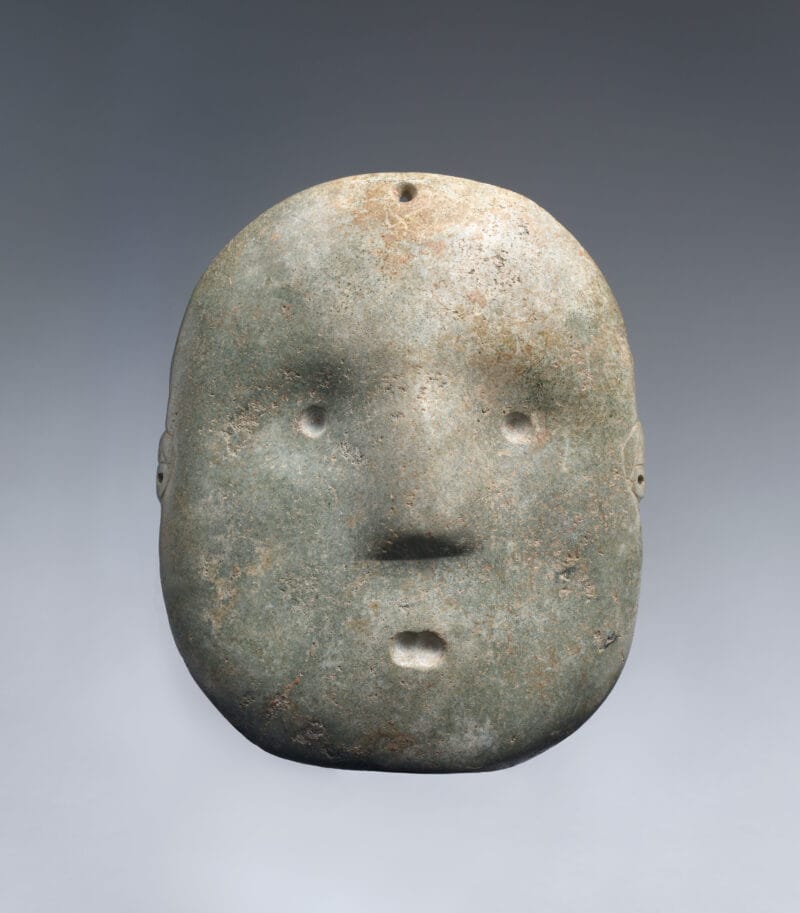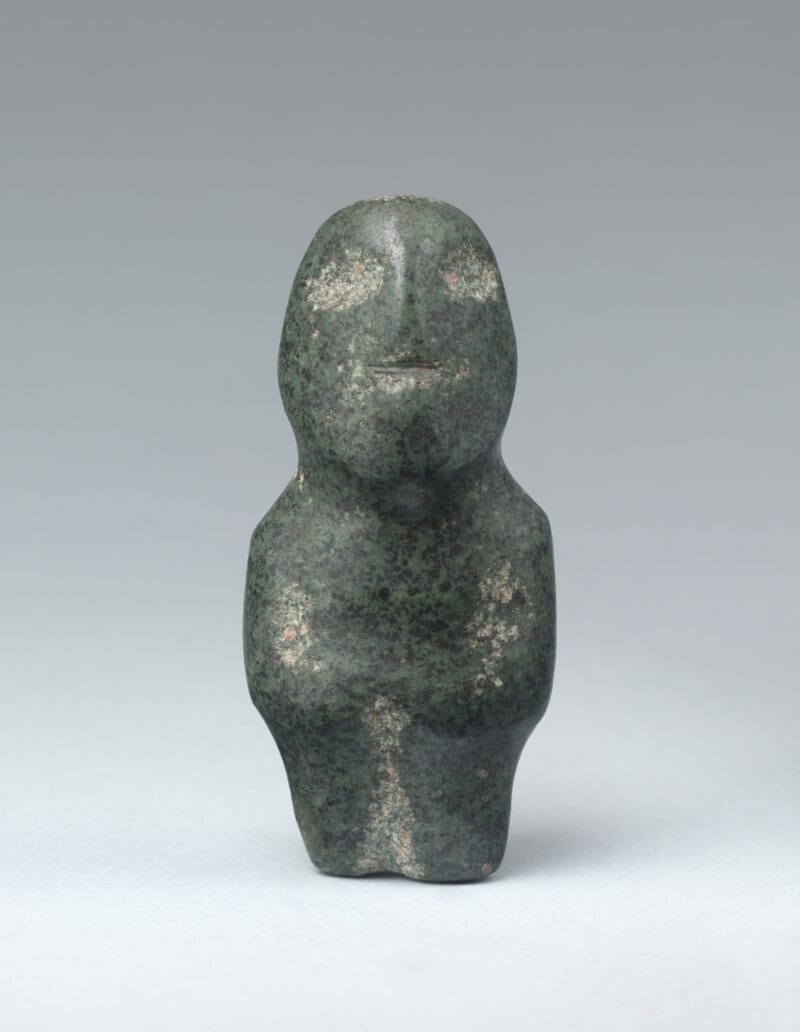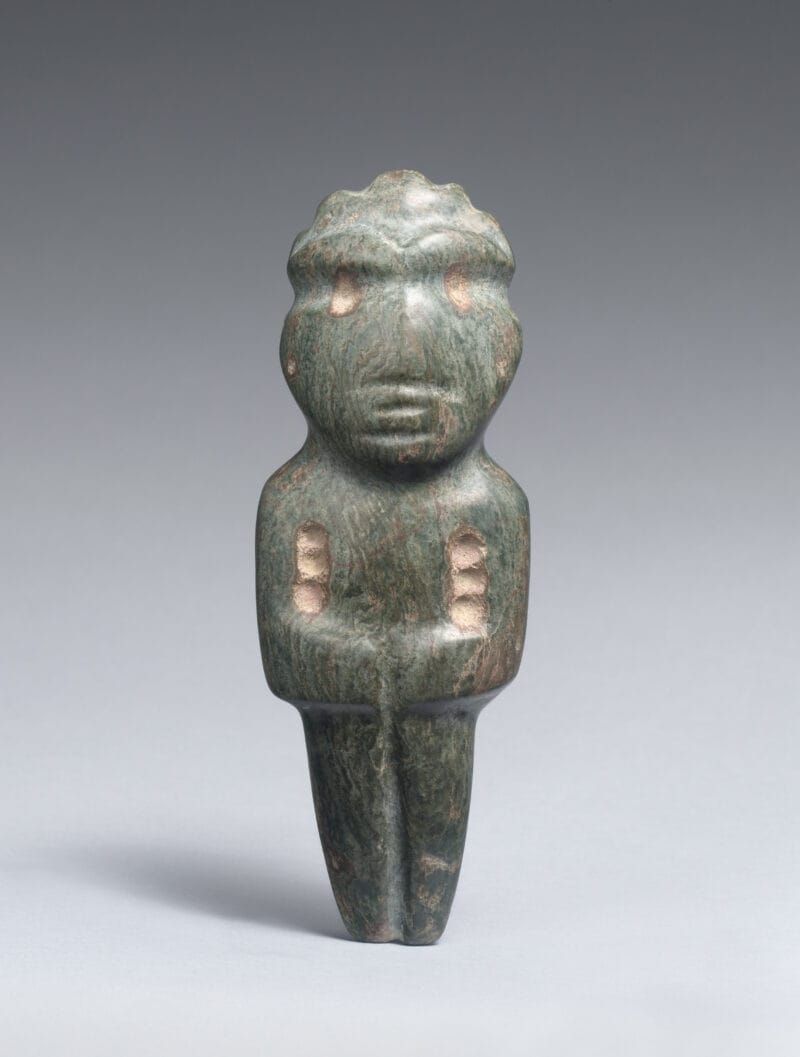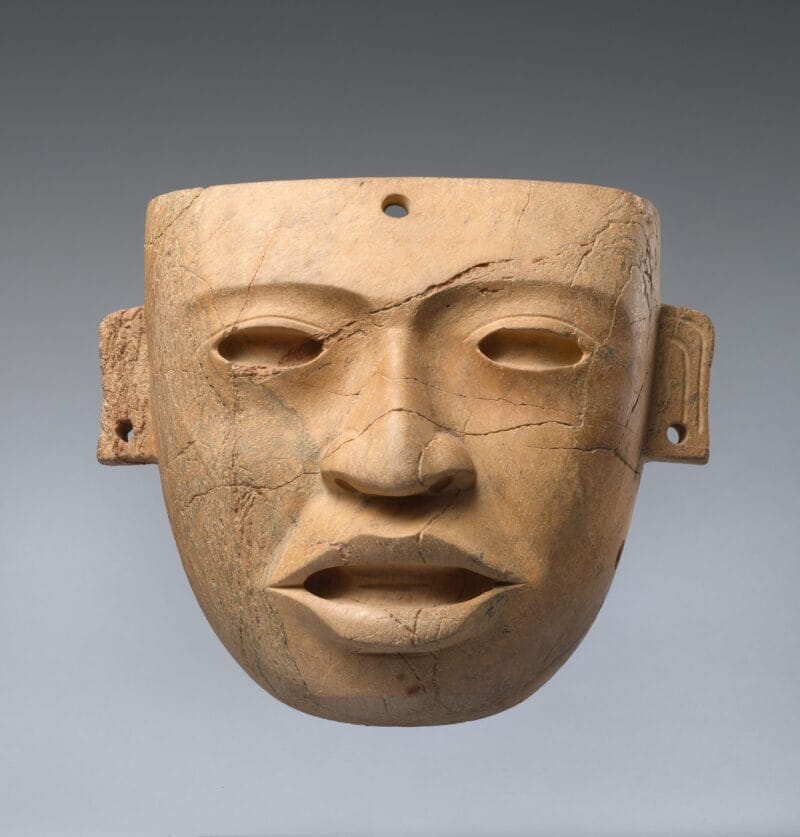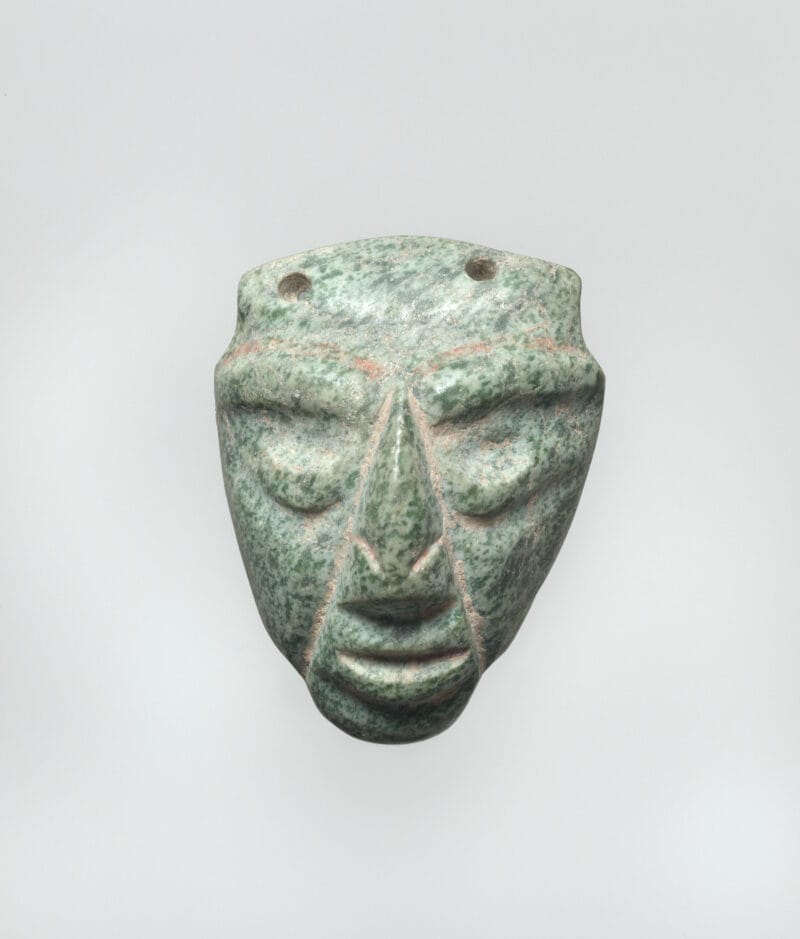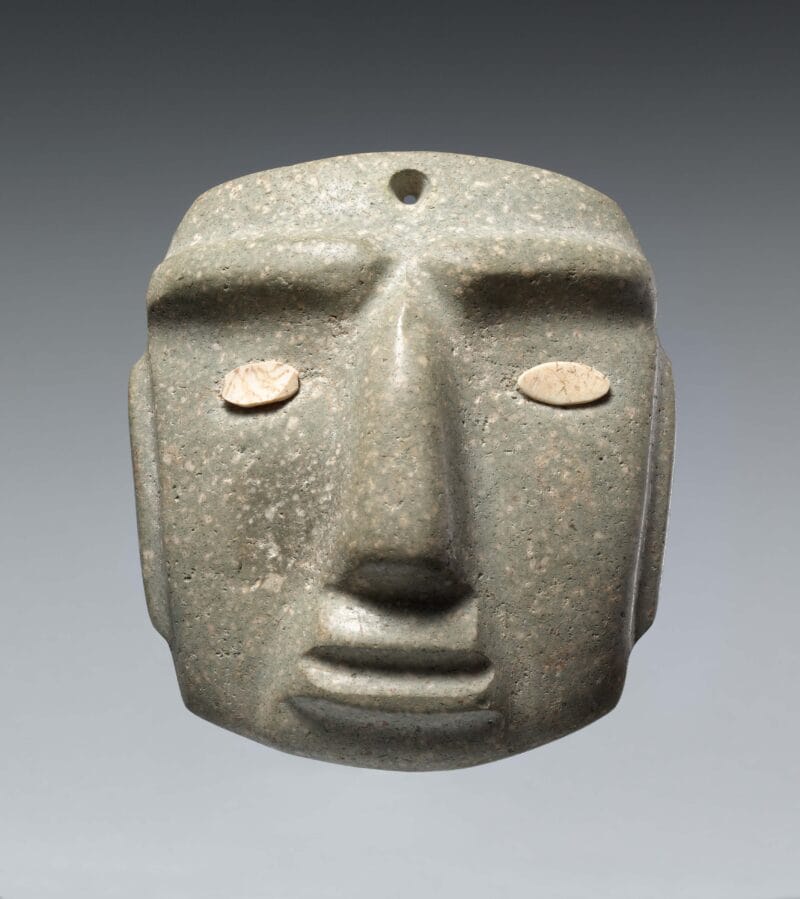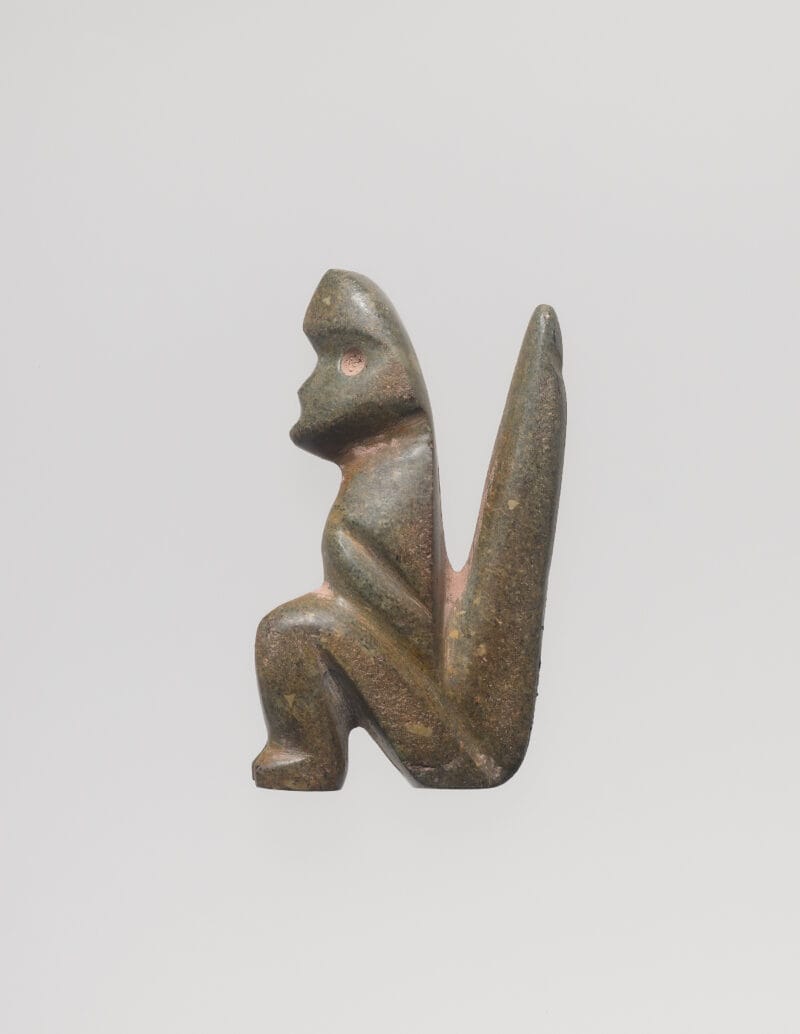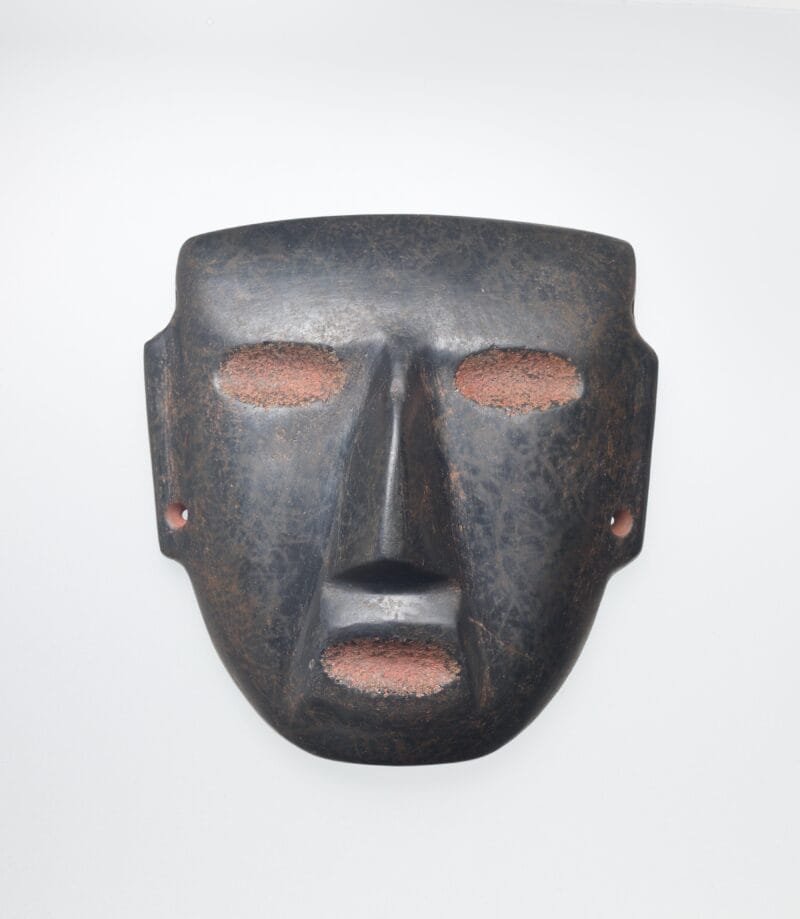
About the Object
This stone face mask, like many others, may have originally been carved from a very large recycled stone tool or hand axe. The eyes and the mouth were likely created by using sandstone tools, while Mezcala artisans sometimes used strings to finely carve and smooth the naturalistic facial features like those seen here. Drilled ears may have allowed the piece to be worn or may have included additional ornamentation (now lost); the nose and triangular emphasis down to the mask’s mouth reveal Chontal characteristics often associated with later years of this tradition.
Additional Information
This unique western Mexican Mezcala-Chontal mask also demonstrates features similar to better-known Olmec and Teotihuacan face masks, especially the overall shape of the mask, while the Mexica or Aztecs later famously excavated and rededicated such objects under the foundations of the most important temples in their capital Tenochtitlán (today Mexico City). In Mesoamerica such objects were believed to be connected to what were called “pre-sunrise” periods.
Dr. Alvin Friedman-Kien Collection;
Gift to The Jan T. and Marica Vilcek Collection, 2008-2010;
Gift to The Vilcek Foundation, 2010;
Curnoe, Jessica, Gillett G. Griffin, and Peter T. Furst. Sculpture and Cosmology in Ancient Guerrero. New York, NY: Throckmorton Fine Art, 2008, ill. fig. 47.
Related Objects
You may also be interested in
Juan Pablo Contreras composes classical music with the sounds of Mexico

Felipe Baeza

Juan Pablo Contreras


